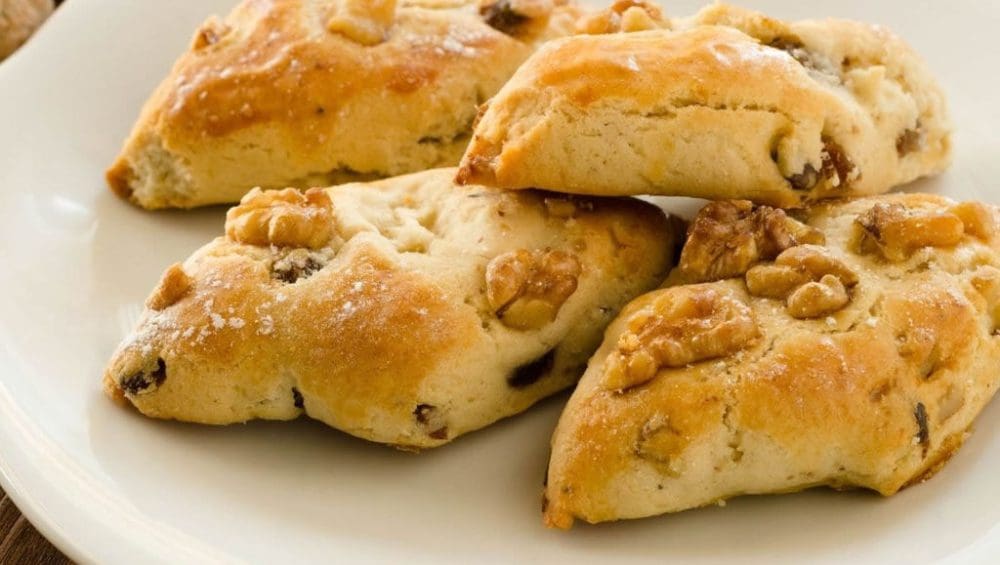In the month of September, typically known for the grape harvest and the grape harvest, we find a famous traditional dessert from Umbria
According to tradition, mostaccioli were the favorite dessert of Saint Francis who tasted these “good and fragrant” biscuits, as the saint said, during his first stay in Rome.
Offering what would become her perennial “sin of gluttony” was Jacopa de’ Settesoli, a Roman noblewoman, who became a collaborator of the newborn Franciscan movement and a dear friend of Saint Francis, so much so that he affectionately called her Friar Jacopa. It is said that Saint Francis liked these sweets so much that he desired them even at the point of death!
Ingredients
Flour 600 g
Sugar 200 g
Raisins 50 g
Brewer’s yeast 50 g
Must 300 ml
Zest of 1 lemon
Extra virgin olive oil 2 tablespoons
Anise seeds (if desired)
Preparation
After sifting the flour, arrange it in a well and add the oil, sugar, sultanas and anise seeds. Mix everything and, once the brewer’s yeast has dissolved in the must, add it to the mixture, continuing to knead until you obtain a dough that can easily be detached from the work surface.
At this point, stretch the dough with your hands to obtain a cylinder, cut it into small pieces and give your mostaccioli the appearance you prefer: diamond-shaped or in the shape of a small donut. Then place them on the baking tray with baking paper. Bake them at 180 degrees and let them cook for about 30 minutes. Once ready, sprinkle a little icing sugar on top.
Curiosity
Cooked must was a typical sweetener throughout peasant Italy and was obtained by cooking fresh must for many hours in low, wide copper containers. Over time, this delicious but time-consuming ingredient has been replaced by sugar.
Cooked must is produced by pressing well-ripe grapes, with a higher sugar quality than that required for the production of wine (23-25% sugar), subsequently filtering the juice obtained. After this, the juice is cooked in containers traditionally made of copper or terracotta, but today replaced by stainless steel. Once boiled, it continues to cook over a low heat for several hours, until the liquid shrinks by a quarter of its initial volume. In many southern regions, “mostaccioli” are famous, desserts made from cooked must, but with a rhombus shape that differentiates them from our tradition.
Copyright foto La gazzetta del gusto
Umbriatourism




